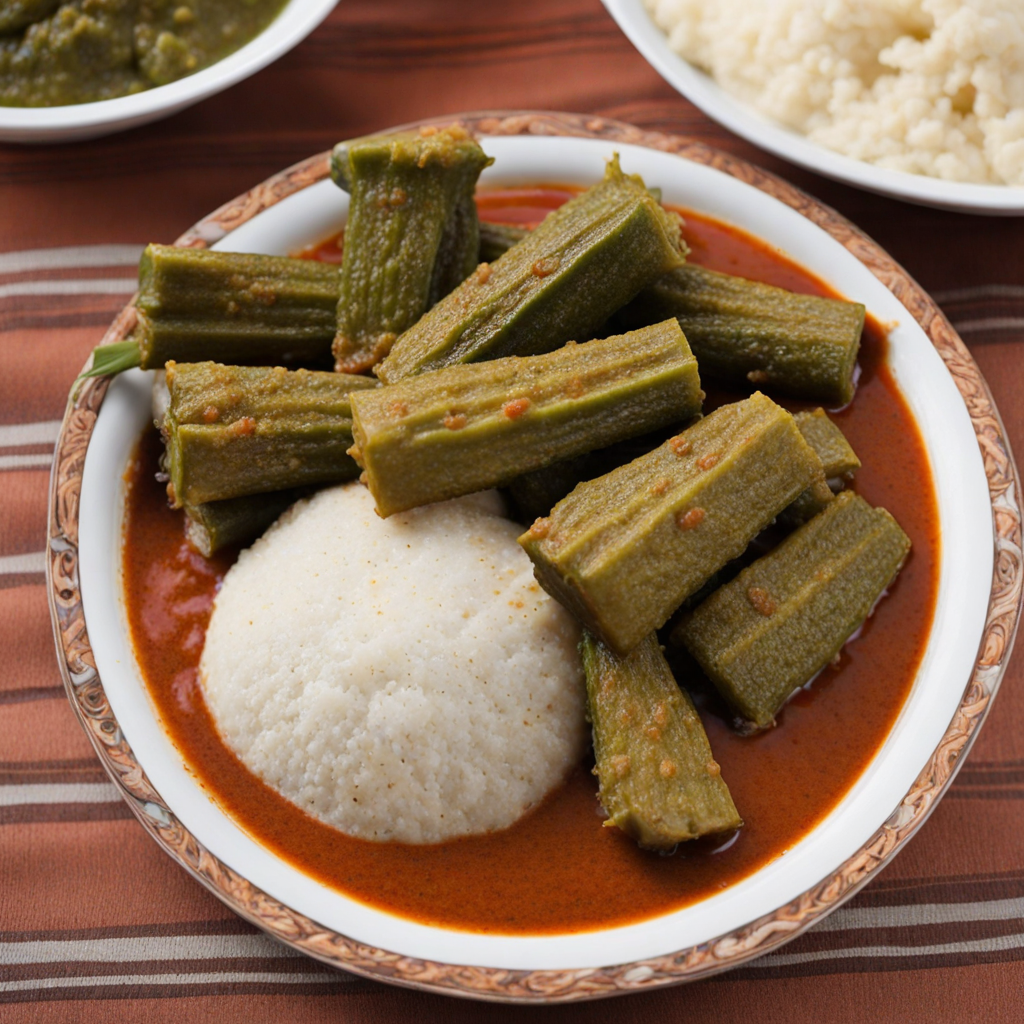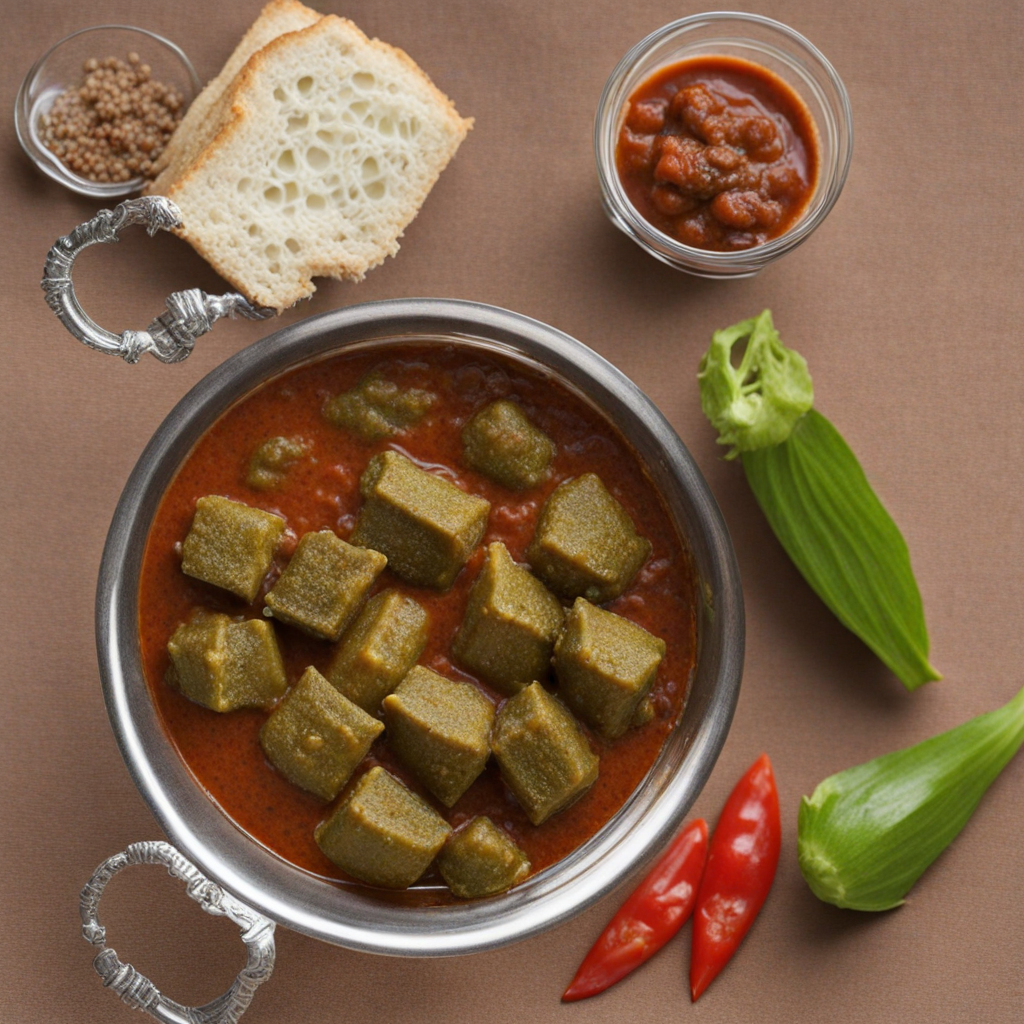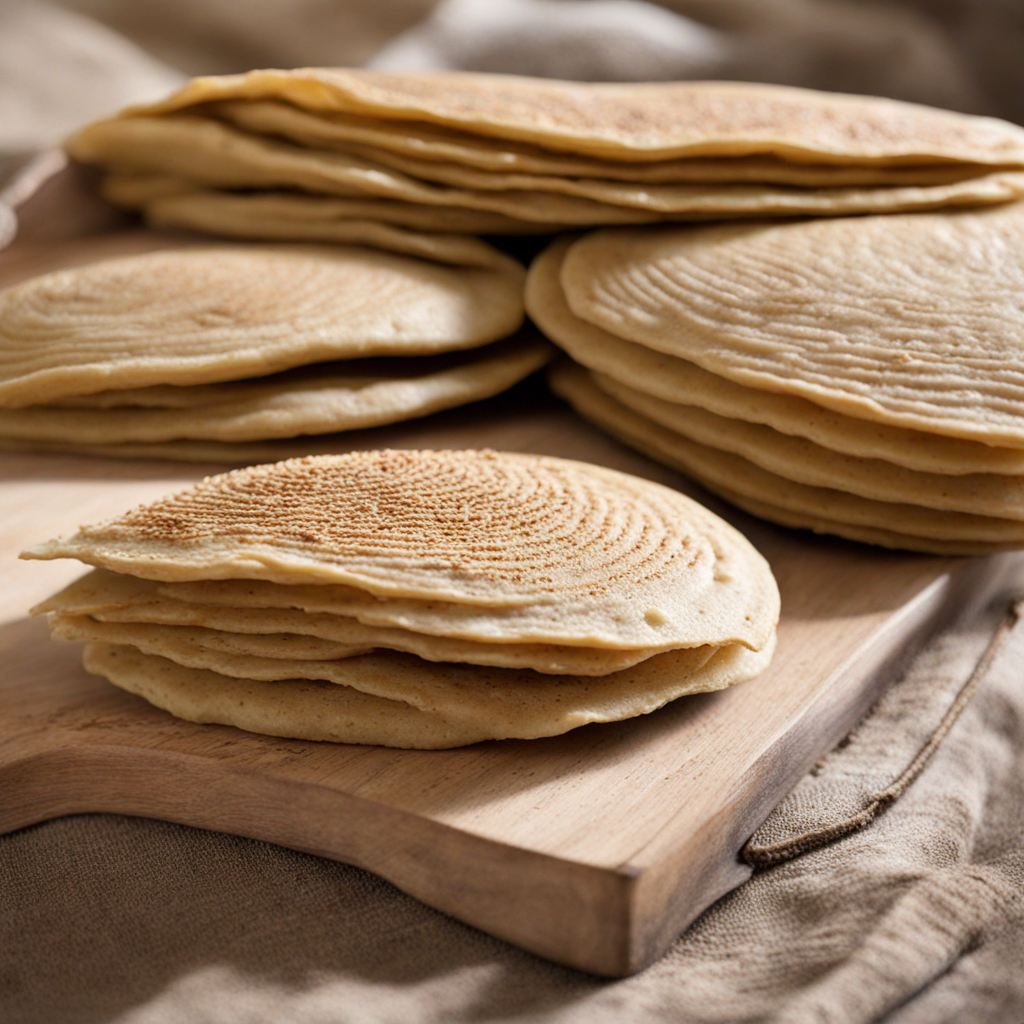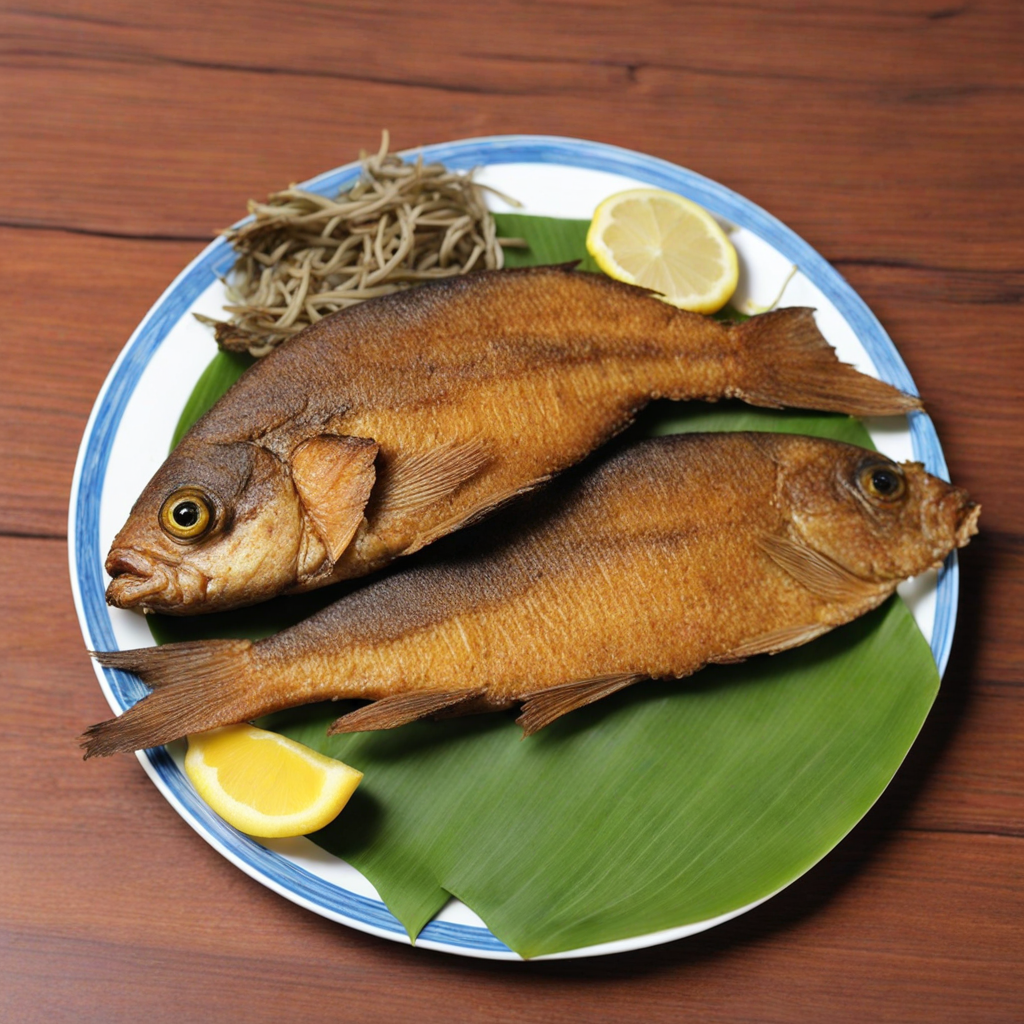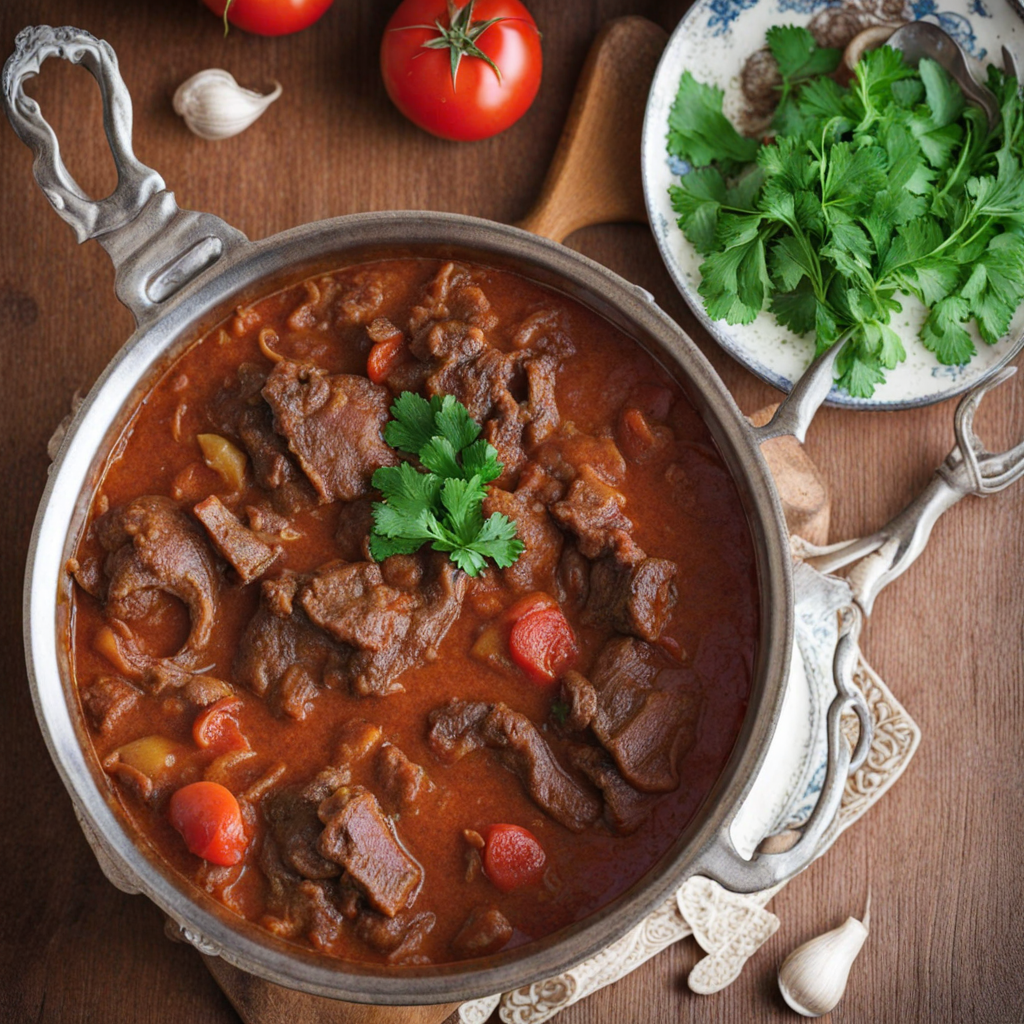Okra Sauce
Okra Sauce, a beloved dish from Chad, brings together the earthy flavors of the okra plant with a medley of spices that create a unique and satisfying experience for the palate. This dish typically features tender, sliced okra cooked down into a thick, rich sauce, often complemented by ingredients such as tomatoes, onions, and a variety of spices that infuse the dish with warmth and depth. The texture of okra becomes slightly mucilaginous when cooked, which helps to give the sauce a wonderfully velvety consistency, perfect for pairing with staple foods like rice or millet. The preparation of Okra Sauce can vary from region to region, yet it consistently highlights the fresh ingredients and traditional cooking methods that are central to Chadian cuisine. Often, the okra is sautéed with onions and garlic before being simmered with tomatoes, which enhances its natural sweetness and balances the flavors. Spices such as chili pepper, ginger, and cumin may be added to create a harmonious blend that is both aromatic and flavorful, appealing to those who enjoy a little kick in their meals. Served as a main dish or a side, Okra Sauce embodies the essence of communal dining in Chad, where meals are often shared among family and friends. The sauce can be enjoyed on its own or with various proteins, such as fish or chicken, making it a versatile addition to any meal. Its vibrant color and rich flavor profile invite food lovers to explore the culinary traditions of Chad, offering a delightful new taste experience that is both nourishing and comforting.
How It Became This Dish
The Culinary Journey of صلصة الباميا: A Taste of Chad #### Introduction صلصة الباميا, or Okra Sauce, is a dish that embodies the heart and soul of Chadian cuisine. With its rich flavors, vibrant colors, and cultural significance, this dish is not just a meal but a symbol of resilience and adaptability, reflecting the diverse influences that have shaped Chad's culinary landscape. This exploration will delve into the origins, cultural importance, and evolution of this beloved sauce, highlighting how it continues to play a vital role in the lives of the Chadian people. #### Origins of Okra Sauce The history of صلصة الباميا can be traced back to the indigenous peoples of Chad, who have cultivated okra (Abelmoschus esculentus) for centuries. Thought to originate in Africa, okra is believed to have been used in various forms since ancient times. The exact origins of the plant are still debated, with theories pointing to regions in both West and East Africa. The introduction of okra to the Chadian diet likely coincided with the traditional agricultural practices of the country’s many ethnic groups, who recognized the plant's versatility and nutritional value. Chad’s geographic location at the crossroads of North and West Africa has allowed for a rich tapestry of cultural exchanges. The country is home to over 200 ethnic groups, each contributing their unique culinary traditions. As a result, صلصة الباميا is not only a dish derived from local ingredients but also a testament to the blending of cultures and flavors across the region. The incorporation of spices, other vegetables, and meats into the sauce illustrates this fusion, creating a dish that is distinctly Chadian yet influenced by neighboring countries. #### Cultural Significance In Chadian culture, food is more than sustenance; it is a means of connection, celebration, and identity. Meals are often communal, bringing families and communities together. صلصة الباميا plays a pivotal role in these gatherings. Its preparation is often a shared activity that strengthens familial bonds and reinforces cultural heritage. The act of cooking and enjoying this dish together is a way for families to pass down traditions and stories, ensuring that cultural practices are preserved across generations. Moreover, okra itself holds a special place in the diets of many African communities. It is celebrated for its health benefits, including its high fiber content and rich vitamin profile. In a country where food security can be a challenge, the versatility and resilience of okra make it a vital crop. Its ability to thrive in hot climates and poor soils means that it is a reliable source of nutrition for many households. #### The Preparation of صلصة الباميا The preparation of صلصة الباميا typically involves a combination of fresh ingredients, including okra, tomatoes, onions, and a variety of spices. Depending on personal and regional preferences, the sauce may also include meat, such as lamb or chicken, or be made vegetarian. The okra is often sliced and sautéed with onions and tomatoes, seasoned with spices like chili, garlic, and ginger, creating a flavorful base. One of the distinctive features of صلصة الباميا is its texture. The mucilaginous quality of okra lends a unique consistency to the sauce, thickening it and enhancing its mouthfeel. This characteristic can be both loved and loathed; however, it is an integral part of what makes the dish so recognizable. Traditionally, صلصة الباميا is served with staple foods such as rice, millet, or fufu, making it a hearty and filling meal. #### Evolution Over Time As Chad has navigated through various historical and political changes, so too has its cuisine, including صلصة الباميا. The colonial period and the subsequent struggles for independence introduced new dynamics into the country’s food landscape. While traditional cooking methods and ingredients remained at the core, the introduction of new spices and cooking techniques from European and Arab influences began to shape the way dishes were prepared and enjoyed. In modern times, globalization and urbanization have further impacted the ways in which صلصة الباميا is prepared and consumed. The rise of convenience foods and changes in lifestyle have led to adaptations of traditional recipes. While the essence of the dish remains, variations now exist that cater to the fast-paced lives of urban dwellers. Many families still hold onto the traditional methods of cooking, but others have embraced quicker, more efficient approaches that might involve pre-packaged ingredients or simplified preparation steps. #### The Role of صلصة الباميا in Contemporary Chad Today, صلصة الباميا continues to thrive in Chad’s culinary scene. It is a staple in households across the country, often served during festive occasions and celebrations. The dish symbolizes not only a connection to the land and its agricultural bounty but also a celebration of Chadian identity. In cities, restaurants and cafes often feature صلصة الباميا on their menus, catering to both locals and tourists who wish to experience authentic Chadian flavors. Moreover, the resurgence of interest in traditional foods and sustainable eating practices has brought renewed attention to dishes like صلصة الباميا. As people seek to reconnect with their culinary heritage, this dish serves as a bridge to the past, reminding them of the importance of local ingredients and age-old cooking techniques. #### Conclusion The journey of صلصة الباميا from its origins to its contemporary significance encapsulates the rich tapestry of Chadian culinary history. This dish is not just a reflection of the ingredients that make it unique but also a celebration of the cultural exchanges, traditions, and resilience of the Chadian people. As it continues to evolve, صلصة الباميا remains an emblem of community, identity, and the enduring power of food to bring people together. Whether enjoyed in a family kitchen or a bustling restaurant, this okra sauce will forever hold a special place in the hearts and palates of those who cherish the vibrant culture of Chad.
You may like
Discover local flavors from Chad


